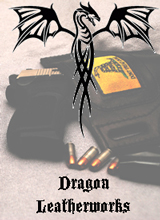So Caleb unveiled the new Ruger LC9 Pistol. I’m happy to see yet another pocket-sized subcompact pistol in a full-size pistol cartridge, as I’m not a fan of guns in .380 Auto, .32 ACP, or .25 ACP.
But overall I’m pissed that Ruger as well as a bunch of other companies feel the incessant need to slap all sorts of extra “Safety” mechanisms on a gun similar to all kinds of other guns that seem to do just fine without such features. The LC9 (as well as the SR9 and SR40) is “DAO” pistol (I suspect the LC9 is a hammer-fired gun, while the SR pistols are striker fired) that has a thumb safety, as well as a magazine disconnect. Now there’s talk about the LC9 being a copy of various other pistols, I don’t care. I will say that there are guns like Kahr PM9, and the Kel-Tec PF9 and the Walther PPS and the new Sig P290 all seem to be OK without such features dispite the strong similarity in function and form to the LC9. I’ll also add that guns like the Glock 17 and the S&W M&P9 are VERY similar to the SR9, but Glock feels no need to offer such features, and S&W Launched the M&P line with none of these features, but felt the need to add them as options. (More on that later).
I will point out that guns like this are somewhat similar (I know there are some mechanical differences, and some tactile differences) to a DAO revolver like my S&W642. Now there are zillions of “Hammerless” and “Bobbed Hammer” revolvers out there. This premise is as old as the Double Action Revolver design. You can get DAO Large-frame revolvers, and DAO tiny-frame revolvers, and the closest I can find to a revolver with a safety is the turn-of-the-century DAO revolvers with grip safeties.
Even this is a passive safety, where a firm grip on the gun is all that’s needed to remove safety, and safety is actuated simply by not being held in the hand.
So what the hell is going on here? Historically Revolvers were never made with safeties. The original Single-action guns required the hammer to be cocked to “arm” the gun. The DA revolver was simply a single-action revolver with an added feature for convenience, and I wonder if anybody thought twice about the gun being able to shoot without a thumb-cocking.
Now the first Semi-auto Pistols were single-action guns. A few were designed to be carried with the hammer down on an empty chamber or on a half-cock notch. But most early pistols had a safety catch that could be engaged. I just did a little sniffing and unless some gun historians can correct, as far as I can tell the first Pistol designed to be carried using only the DA trigger and the passive safeties (ie like a Revolver) was the H&K VP70, which was developed in the 70s, and the Sig Sauer P220, and the Glock 17 close behind.
The 70s are VERY recent in handgun history (That pocket Hammerless linked above was designed in the late 1800s!) and probably newer than most of the people carrying handguns around today. (Hell I was born before the first Glock 17 was made).
Still why do so many manufactures cling to old superstitions? S&W no longer makes the “Lemon Squeezer” revolver (OK they still have a few, but they’re under the “Classic” line) but they DO feel the need to put a magazine disconnect and a thumb safety on their M&P line which they feel safe enough to offer it completely stripped of all this crap, and their new Bodyguard .380 pistol only comes with a thumb safety…but the Bodyguard .38, while having a radical polymer frame, and a bizzare relocation of the cylinder catch, they felt no need to deviate from trusting the DAO trigger. And S&W and Ruger aren’t the only ones, As far as I know gun makers like Beretta, H&K, and Taurus as well as lots of others feel the need to put manual safeties on damn near all of their guns, despite most of the guns being perfectly safe with the safety omitted. Also Springfield gives the option of an added thumb safety on their XD line, tho the fist XDs did not have this feature, nor did the Croatian pistol Springfield bought the rights to, nor does this option exist in the several variants of the XDm line.
I believe Glock to first get the market warmed up to their radically different pistol did a lot of PR work to get people to see how safe the Glock “Safe Action” is. It seems the other companies just simply slap a set of training wheels on their guns, and feel the need to design many with extraneous safeties from the get-go.
Seriously, what are you afraid of? Caleb raises this interesting point.
The second thing I want to talk about is the manual safety. People seem to not like it. That’s cool, you don’t have to use it. There is a weird misconception that you need to use every safety device that your pistol comes with.
I hear that, I have several guns with manual safeties that I rarely use. I actually need to practice flicking off the safety on my Mossberg 590, because when I shoot the gun at the range or trap field I lode up the gun, and shoot my rounds and simply open the action. For that shooting a safety isn’t needed.
But switches are designed to be thrown. There have been a few times when I’ve taken my 1911 out of my holster at the end of the day only to find the safety in the “off” position. No idea if it jarred free in the holster, or if I simply forgot to engage it before I holstered the gun in the first place. Even with the 4 pound trigger, that gun isn’t going to do anything if I don’t hit the trigger. Remember, rule #3!. This doesn’t effect my shooting at all, as I keep my finger clear of the trigger ALWAYS, and fire the gun with my thumb ON the safety. There is simply no way outside of broken metal that I will be pressing the trigger in a firing grip and the safety will be on. But what about an ignored safety? What if I carried a Beretta 92, or a Walther PPK and I simply used the safety as a decocking lever. These common guns have slide-mounted safeties, so you can’t positively hold them while firing, and since “fire” is out of the way of your hand, it would require a negative sensation to confirm the gun’s condition. (ie you need to feel if the safety ISN’T there, rather than where it is)
What if the safety is flipped on as you draw? I imagine this will totally mess up things in a time of need. So yeah you didn’t use it, but its there anyway.
The bottom line is you should never trust a mechanical device to protect you from bad gun handling. Any gun that can be fired at a target can also be fired at something you don’t want to shoot if you are unsafe.
Until you learn safe gun handling, and are comfortable with your chosen handgun you should NEVER carry it. The only safety device worth a damn is between your ears, and what gun you have won’t change that. But a redundant safety device could activate or break without your knowledge and cost your life.
I wish more gun companies thought about it like that.



All that said, I still carry my 1911 cocked and locked. It never comes out of the holster except at the range or bath time, but the trigger is light enough that I don’t want to have to worry about it. More than right on the safety betwixt the earlobes, though. When I make the decision to take it out of the holster, my right index finger gets all of the brain juice I can give it to stay out of the trigger guard until I have a sight picture on something that needs perforation. Maybe it’s just my inner engineer that like redundancy
😀
I also carry a 1911 cocked-and-locked. But first up SA triggers, even heavier ones, have such a short travel its not as much of a deliberate act to pull them, so the safety is a good idea. The grip safety is something I may hate (but probably not. I tend not to feel the grip safety on an XD, just as I don’t feel the trigger safety on the various guns that use the glock-like trigger mechanism) on any other gun, but given 100 years of reliability, plus tens of thousands of rounds in my personal experience, I trust the 1911 platform.
Also I was fiddling with a FNP45 a while back. Its a DA/SA gun, and nice looking, and feels good in the hand, but it has a thumb safety similar to an H&K pistol. Up safe, middle fire, down decock. Neat idea, as the user can select how they want to carry. Cocked-and-locked, Condition 2, or Decocked and safe.
I actually wouldn’t mind the gun if pushing down on the safety decocked it, because assuming a 1911 high-thumbs grip might depress the decocker. Otherwise you could choose not to use the safety, but shoot it in such a way to deactivate it.
I also don’t mind the safety on my CZ-82, as the safety blocks the hammer, so when the hammer down the safety is blocked much like a 1911’s. This means if you carry cocked-and-lock its just like a 1911, but hammer down the safety is non-functional, so not in the picture for carry or drawstroke.
Of course be cautious manually decocking any firearm onto a live arm, as a finger slip could discharge a round. If I carried my 82 (or an older CZ-75, which was offered without a decocker) I’d keep a clearing barrel filled with sand in the armory to point the gun at when dropping the hammer for carry.
I remember all the way back to my cub scout days, at a camp where we shot BB guns, the Boy Scout who was in charge of the station stressed that the safety was a “mechanical device that can fail,” and that we should never trust it.
…the closest I can find to a revolver with a safety is the turn-of-the-century DAO revolvers with grip safeties.
Well, and the odd semi auto revolver, of course. 😉
As far as safeties on DAO pistols versus revolvers, though, I can only speculate that it’s because those pistols use a doodad like Glock’s “safe action” to partially cock the hammer or striker, giving a “double action” trigger pull that’s a good bit lighter than on a double action revolver. I know this is the case with the LCP.
It’s still a stupid overreaction, but maybe not a completely baseless stupid overreaction.
you know I never realized the cylinder timing was linked to the frame camming, not the linkwork on the the trigger like all other double-action guns (Makes sense when you think about it). All the demos I’ve seen of the gun show the guy cocking it with the “Slide”, but I’d heard people say you could just get it up and running by cocking the hammer or pulling the trigger.
But again this was a cocked-and-locked SAO gun, much like the odd looking Webly Automatic they made for almost as brief a time.
So that revolver makes sense….kinda. (Who cares if your revolver cocks itself?)